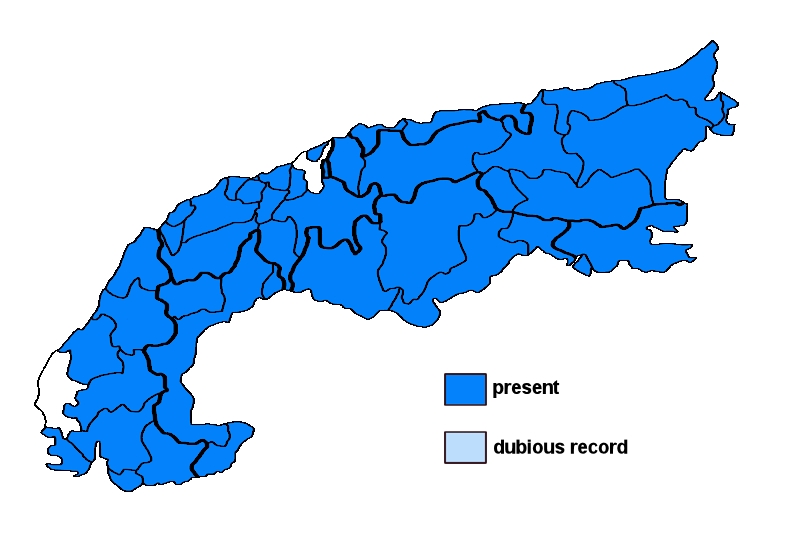Parmeliopsis hyperopta (Ach.) Arnold
Syn.: Foraminella hyperopta (Ach.) S.L.F. Mey., Imbricaria ambigua (Hoffm.) DC. var. albescens (Wahlenb.) Flot., Imbricaria hyperopta (Ach.) Körb., Parmelia ambigua (Hoffm.) Ach. var. albescens (Wahlenb.) Schaer., Parmelia diffusa (Weber) Rebent. var. albescens (Wahlenb.) Rabenh., Parmelia hyperopta Ach.
Lichenised.
Substrate: bark, lignum, living mosses, siliceous rocks
Altitudinal range: from the submediterranean/colline belt (potential vegetation: mixed deciduous forests dominated by Quercus and Carpinus) to the alpine belt (potential vegetation: treeless Alpine grasslands and tundras, to the lower limit of perennial snow and the equilibrium line of glaciers)
Note: a mainly boreal-montane, circumpolar lichen found on basal parts of trunks, especially of conifers, with a long snow cover; ecology and distribution resemble those of P. ambigua, but this lichen is slightly less photo- and more hygrophytic; widespread throughout the Alps.
Austria: Vorarlberg; Tirol; Salzburg; Kärnten; Steiermark; Oberösterreich; Niederösterreich (incl. Wien); Burgenland; Germany: Oberbayern; Schwaben; Switzerland: Appenzell; Bern; Fribourg; Glarus; Graubünden; Luzern; Schwyz; Ticino; Uri; Unterwalden; Vaud; Valais; France: Alpes-de-Haute-Provence; Haute-Alpes; Alpes-Maritimes; Isère; Savoie; Haute-Savoie; Vaucluse; Var; Italy: Friuli; Veneto; Trentino Alto Adige; Lombardia; Piemonte; Valle d'Aosta; Liguria; Slovenia: Alpine and Pre-Alpine Slovenia; Trnovsky Gozd; Liechtenstein





